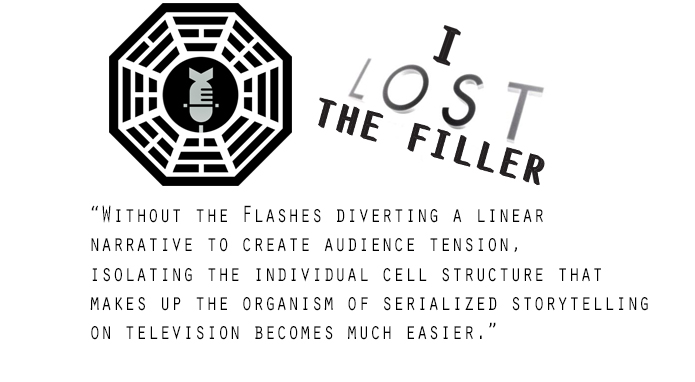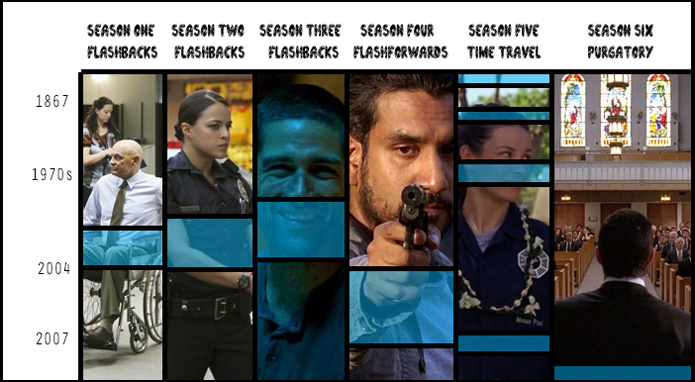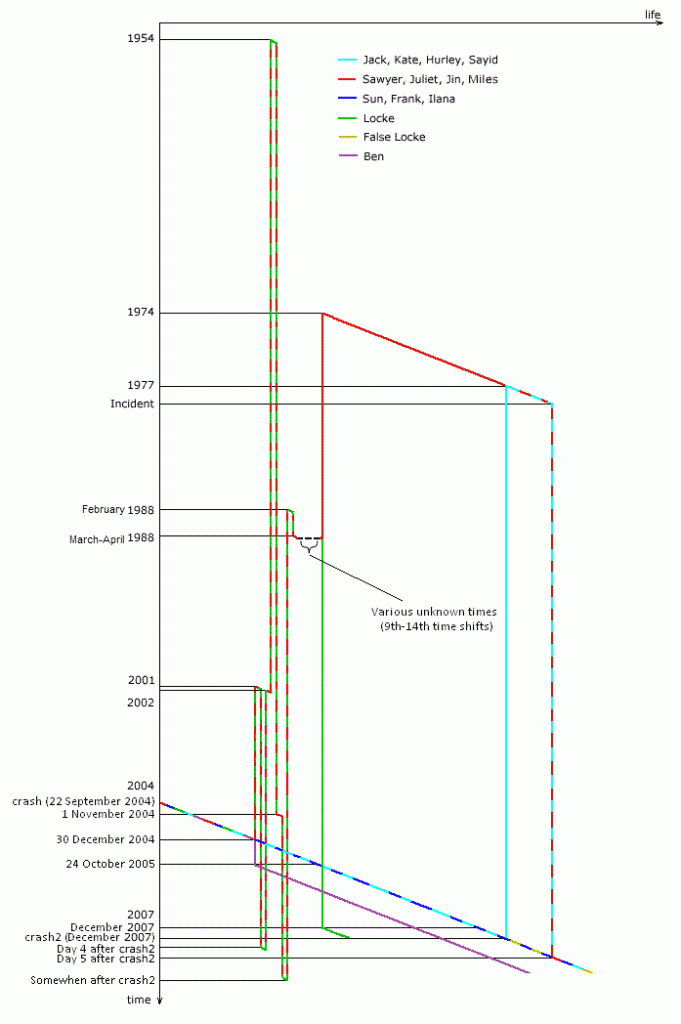//We Have To Go Back
With the knowledge that not all the mysteries we obsessed about contributed to the true end of the narrative, what we’re left with is a show about characters that was constructed as a show about plot.
Regardless of its medium, every narrative has a meaty center–what’s in between the beginning and the end. If you think about it like a sandwich, the sandwich is technically anything between two slices of bread (the beginning and end).
The shortest story of Lost is: “Jack came to a magical island that he saved and then died and went to heaven.” Every additional element, like characters, plot and theme, just exist to emotionally bond us, the narrative’s consumer, to process of the story being told.
Lost’s core storytelling mechanic of “Flashing” –backwards, forwards and sideways–is the warped timeline that distributes information and plot to the audience in a way that maximizes drama. Sometimes we know things the characters don’t, other times the characters are months or years ahead of us and we get a glimpse of the end of that character’s journey, but this constant withholding gives the feeling that the other shoe is going to drop; it creates narrative tension.
This is a plot mechanic well suited for crime dramas and procedurals, obviously, but when it’s used in a serialized television show it can unshackle itself from true crime mysteries and apply the tension of knowing-but-not-knowing to anything. Take How I Met Your Mother (please, take it!)
In Seasons 1, 2, and most of 3, the show’s Flashes are traditional flashbacks that let the audience know about the characters’ pasts before they landed on the Island. This establishes why the characters are “Lost” in their personal lives and – once the Island is revealed to be a magnet tuned to them by a deity named Jacob – shows what personal obstacles they have to overcome while on the Island.
The narrative tension is a free exchange of the power of the unknown between the character/show and the audience. Sometimes, through the power of the modern television consumer’s capacity for connecting two barely related narrative dots, we’re meant to infer greater meaning behind a character’s otherwise uninformed actions. Stringing various moments of narrative tension together is the process of active television watching. We’re shown FlashBacks as a way to highlight the theme of the episode and place a character’s on-Island actions in the context of their life. Also, we’re shown FlashBacks that contain information the characters remain ignorant of (such as Claire and Jack being step-siblings), the process of filling in these gaps in our own minds is our participation with the show.
Season 4, which was written after the show had secured an end date, jumped to FlashForwards that show us where our characters end up to contrast with how they are in our main Island Timeline. The tension here comes from knowing how far Jack will fall emotionally before becoming Bearded Jack. Season 5, the time travel season, is more like trying to end a crossword puzzle by guessing the words you have partially filled in. Season 6’s Flash/Sideways go into Purgatory, where each cast member is living out an alternate version of their life.



Comments